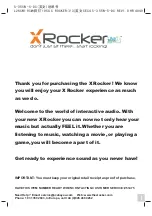
• Reference Waveform
VEHICLE INFORMATION
YEAR
: 1989
MAKE
: Acura
MODEL
: Legend
ENGINE
: 2.7 L
FUELSYS : Multiport Fuel Injection
PCM_PIN : C3 OrgBlu
STATUS
: KOER (Key On Running)
RPM
: Idle
ENG_TMP : Operating Temperature
VACUUM : 20 In. Hg
MILEAGE : 69050
• Troubleshooting Tips
Make sure the frequency of the waveform is keeping pace with engine RPM, and that the time between pulses only
changes when a “sync” pulse is displayed. This time changes only when a missing or extra tooth on the reluctor
wheel passes the sensor. That is, any other changes in time between the pulses can mean trouble.
Look for abnormalities observed in the waveform to coincide with an engine sputter or driveability problem.
Hall Effect Camshaft Position (CMP) Sensor
• Theory of Operation
These CMP sensors are classified as “CMP Sensors - Low Resolution” in industry.
The Hall CMP sensors are low resolution (accuracy) digital sensors which generate the CMP signal, that is a low
frequency (tens of Hz) square wave switching between zero and V Ref, from a Hall sensor.
The Hall CMP sensor, or switch, consists of an almost completely closed magnetic circuit containing a permanent
magnet and pole pieces. A soft magnetic vane rotor travels through the remaining air gap between the magnet and
the pole piece. The opening and closing of the vane rotor’s window interrupts the magnetic field, causing the Hall
sensor to turn on the off like a switch - so some vehicle manufacturers call this sensor a Hall switch.
These sensors operate at different voltage levels depending on the vehicle manufacturers and deliver a series of
pulses as the shaft rotates.
They are used to switch the ignition and/or fuel injection triggering circuits on and off.
The PCM uses the Hall CMP sensors to detect misfire.
6-17
The amplitude and frequency increase with engine speed (RPM).
The amplitude, frequency and shape should be all consistent for the conditions (RPM,
etc.), the time between pulses repeatable (except for “sync” pulses), and the shapes
repeatable and predictable.
PK - PK = 9.93 V
FREQ = 33.1 Hz
• Troubleshooting Tips
The duty cycle of the waveform changes only when a “sync” pulse is displayed. Any other changes in duty cycle can
mean troubles.
The top and bottom corners of the waveform should be sharp. However, the left upper corner may appear rounded
on some of the higher frequency (high data rate) optical distributors. This is normal.
Optical CKP sensors are very susceptible to malfunction from dirt or oil interfering with the light transmission through
the rotating disk. When dirt or oil enters into the sensitive areas of the sensors, no starts, stalls, or misfires can
occur.
Magnetic Camshaft Position (CMP) Sensor
• Theory of Operation
The magnetic CMP sensors are AC signal generating analog sensors. The generally consist of a wire wrapped, soft
bar magnet with two connections. These two winding, or coil, connections are the sensor’s output terminals. When a
ring gear (a reluctor wheel) rotates past this sensor, it induces a voltage in the winding. A uniform tooth pattern on
the reluctor wheel produces a sinusoidal series of pulses having a consistent shape. The amplitude is proportional to
the rotating speed of the reluct or wheel (that is, t he crankshaft or camshaft). The f requency is based on the
rotational speed of the reluctor. The air gap between the sensor’s magnetic tip and the reluctor wheel greatly affects
the sensor’s signal amplitude.
They are used to determine where TDC (Top Dead Center) position is located by creating a “synchronous” pulse
which is generated by either omitting teeth on the reluctor wheel or moving them closer together.
The PCM or ignition module uses the CMP sensors to trigger ignition or fuel injector events. The magnetic CMP and
CKP sensors are susceptible to Electromagnetic Interference (EMI or RF) from high voltage spark plug wires, car
phones or other electronic devices on the vehicle. This can cause a driveability problem or set a Diagnostic Trouble
Code (DTC).
• Symptoms [OBD II DTC’s: P0340 ~ P0349, P0365 ~ P0369, P0390 ~ P0394]
Long cranking time, poor fuel economy, emissions failure
• Test Procedure
1. Connect the CH A lead to the sensor output or HI and its ground lead to the sensor output LO or GND.
2. With KOER (Key On, Engine Running), let the engine idle, or use t he throt tle to accelerate or decelerate the
engine or drive the vehicle as needed to make the driveability, or emissions, problem occur.
3. Use the Glitch Snare mode to catch dropouts or stabilize waveforms when a “sync” pulse is created.
6-16
















































